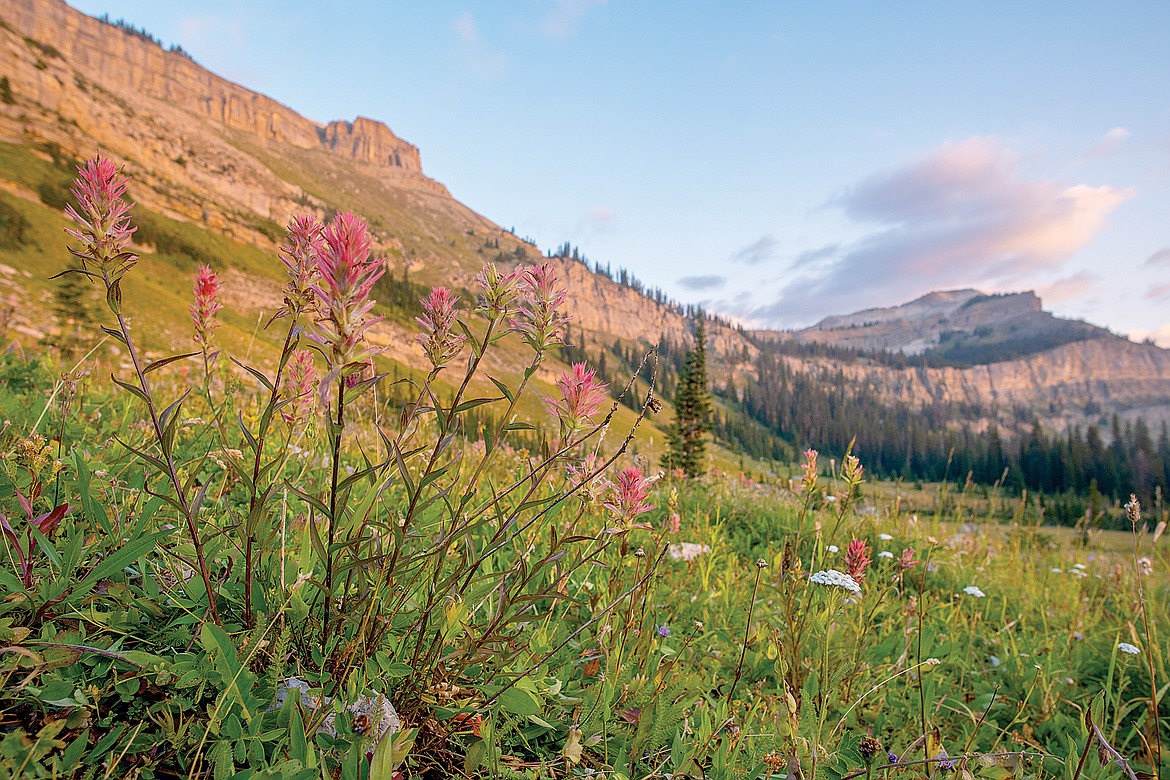Flathead Forest saw a lot of activity in 2020
The Flathead National Forest had a busy 2020, and expects a busy 2021 as several timber, trail, and other projects are expected to continue or start anew.
Here’s some highlights of the year, as provided by the Forest Service.
On the forest front, contract and Forest Service crews planted approximately 280,000 trees this year. The trees were entirely native species — primarily western larch, ponderosa pine, western white pine, and whitebark pine. The U.S. Fish and Wildlife Service recently announced it was proposing listing the whitebark pine under the Endangered Species Act.
On the timber harvest front, in the fiscal year 2020, the Forest sold 47.3 million board feet of timber on harvests of about 3,700 acres. The total sale value was $5.7 million. The Forest said favorable market conditions and the local availability of mills contributed to high sale values. Lumber markets reached record high levels in 2020, but have since settled off a bit.
The funds from timber sales are used for reforestation efforts, other restoration projects including aquatic habitat, and returns the remainder to the Treasury Department to support other national priorities. This year, the sales were primarily comprised of Douglas-fir and lodgepole pine, species abundant in the region, the Forest said.
More timber projects are planned or will continue in the coming year, including the Frozen Moose project in the North Fork, the Hellroaring Basin project on Big Mountain, the Crystal Cedar project near Columbia Falls, the Salish Good project near Whitefish, the Stovepipe project in the northwest Flathead Valley, the Bug Creek project in the Crane Mountain area, the Lake Five project near West Glacier, and the March Madness salvage project near Swan Lake.
The Crystal Cedar project will also include about 25 miles of bike, horse and pedestrian trails in cooperation with the Gateway to Glacier Group.
On the resource conservation front, the aquatics program treated invasive aquatics species across 400 lake acres and 2.5 miles of stream habitat including Holland Lake, Red Butte Creek, and Smith Creek. Staff inventoried approximately 300 miles of closed road and monitored 155 crossings on roads to identify potential chronic sources of sediment and other habitat impacts within streams occupied by bull trout and other native aquatic species. In turn, the Forest built 7 more miles of new roads, maintained 476 miles of existing road and repaired 45 damaged gates and berms installed in areas where roads are not open to motorized travel or are only open seasonally.
Wildfires were relatively few in 2020 and most were in wilderness areas. The Forest had 20 human-caused fires that spread to 2.5 acres, primarily due to carelessness with campfires, cigarettes, and other human activities. It also had 18 lightning-caused fires totaling 5,425 acres burned. During the pandemic, firefighting response came with increased risk as firefighters not only contended with the risks of wildfire but also the need to manage for COVID-19 outbreaks. The Forest used a ‘module as one’ concept to reduce virus spread, keeping small crews together and reducing interaction between crews, in addition to other tactics on the fire line.
Crews balanced their time between firefighting in Montana with national assignments due to high demand firefighting resources elsewhere. Fire personnel mobilized for fire assignments in January to Australia and Tennessee. They served in high priority areas throughout the summer. Some were still on assignment into November and December. Many served up to a month at a time away from home.
In wilderness news, the Bob Marshall Wilderness turned 80, as it was first created administratively in 1940 and later codified into law in 1964. In the spring, the Bob Marshall Wilderness Foundation won the Forest Service Chief’s top Enduring Service award for its work on trail and other projects in the Bob over the years.
On the recreation front, the Flathead Avalanche Center had a robust year. The Center issued 243 avalanche forecasts and condition reports, alerting the public to dangerous backcountry conditions in the Whitefish, Swan, and Flathead Ranges, and Glacier National Park, nearly double the total from three winters ago. People also flocked to the Forest, as campgrounds in Glacier National Park were closed. From river use to campground occupancy, Forest staff saw people in places and in numbers not observed in years past. Flathead Valley Campgrounds, the concessionaire that manages 12 of the Forest’s fee campgrounds, had a busy summer with high occupancy during their operating season. Reservation and first come first serve campsites were often full. As a result, the Forest saw an increase in dispersed recreation and camping in undeveloped sites forest wide.
It was not unusual to see people camped in pullouts along the roads.
Some left behind plenty of garbage. During the annual meeting of the Northern Continental Divide Ecosystem bear management team earlier this fall, Montana Fish Wildlife and Parks bear manager Tim Manley showed slides of garbage left behind at undeveloped sites.
One party even left behind steaks — still in the package, but rotten.
Rental cabin use and occupancy was high for all 16 cabins and lookouts the Flathead offers, with an overall average of 89% occupancy.
Crews developed new and more frequent cleaning protocols for restrooms and cabin rentals, stepped up food storage and bear aware education for out of state visitors, and responded to an uptick in graffiti, dumping, and other vandalism at high-use recreation sites.
They expect another busy year in 2021.


